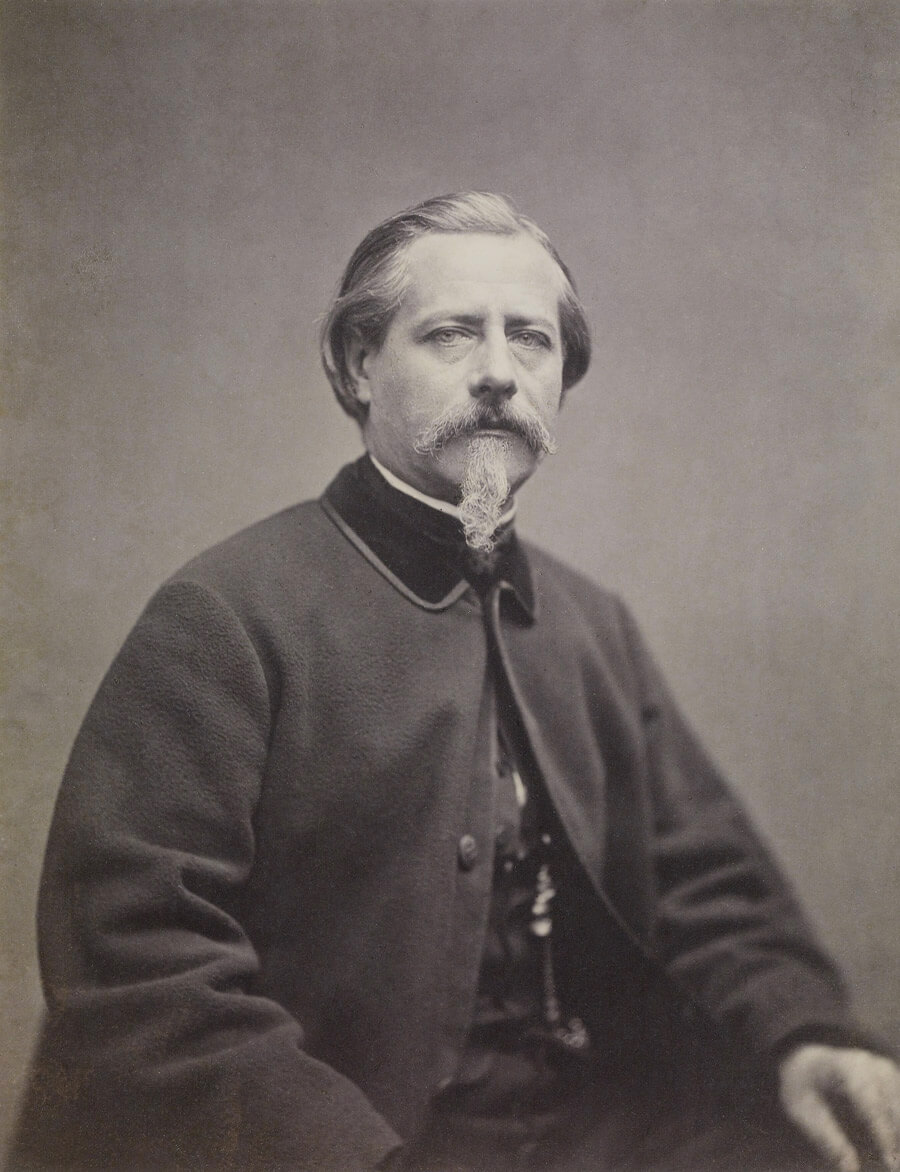Charles Marville, the pseudonym of Charles François Bossu (Paris 17 July 1813 - 1 June 1879 Paris), was a French photographer, who mainly photographed architecture, landscapes and the urban environment. He used both paper and glass negatives. He is most well known for taking pictures of ancient Parisian quarters before they were destroyed and rebuilt under "Haussmannization", Baron Haussmann's new plan for modernization of Paris. In 1862, he was named official photographer of Paris.
Marville's past was largely a mystery until
Sarah Kennel of the
National Gallery of Art and independent researcher Daniel Catan discovered that Marville's given name was Charles-François Bossu. That newly-found association allowed them to discover a variety of biographical information, including photographs of his family, that had been considered lost to time.
Bossu was born in 1813 in Paris. Coming from an "established" Paris family, he trained as a painter, illustrator and engraver. He assumed the pseudonym Charles Marville around 1832, and began working in his field. After 17 years, as an illustrator, he took up photography around 1850. He had no family, but a long-time companion was included in his will. He died in 1879 in Paris.
Source: Wikipedia
Charles Marville was commissioned by the city of Paris to document both the picturesque, medieval streets of old Paris and the broad boulevards and grand public structures that
Baron Georges-Eugène Haussmann built in their place for Emperor Napoleon III.
Marville achieved moderate success as an illustrator of books and magazines early in his career. It was not until 1850 that he shifted course and took up photography - a medium that had been introduced just 11 years earlier. His poetic urban views, detailed architectural studies, and picturesque landscapes quickly garnered praise. Although he made photographs throughout France, Germany, and Italy, it was his native city - especially its monuments, churches, bridges, and gardens - that provided the artist with his greatest and most enduring source of inspiration.
By the end of the 1850s, Marville had established a reputation as an accomplished and versatile photographer. From 1862, as the official photographer for the city of Paris, he documented aspects of the radical modernization program that had been launched by Emperor Napoleon III and his chief urban planner, Baron Georges-Eugène Haussmann. In this capacity, Marville photographed the city’s oldest quarters, and especially the narrow, winding streets slated for demolition. Even as he recorded the disappearance of Old Paris, Marville turned his camera on the new city that had begun to emerge. Many of his photographs celebrate its glamour and comforts, while other views of the city’s desolate outskirts attest to the unsettling social and physical changes wrought by rapid modernization.
Haussmann not only redrew the map of Paris, he transformed the urban experience by commissioning and installing tens of thousands of pieces of street furniture, kiosks, Morris columns for posting advertisements, pissoirs, garden gates, and, above all, some twenty thousand gas lamps. By the time he stepped down as prefect in 1870, Paris was no longer a place where residents dared to go out at night only if accompanied by armed men carrying lanterns. Taken as a whole, Marville’s photographs of Paris stand as one of the earliest and most powerful explorations of urban transformation on a grand scale.
Source: Howard Greenberg Gallery
